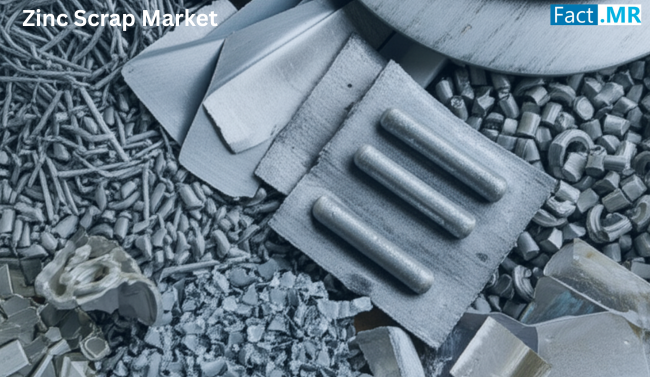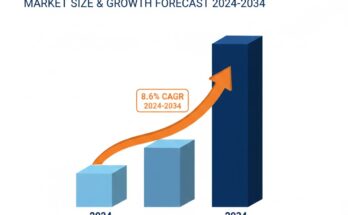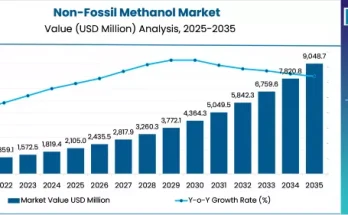The global zinc scrap market is entering a phase of strong growth, driven by increasing industrial demand and the shift toward sustainable resource management. Valued at USD 11,496 million in 2024, the market is projected to reach USD 19,178 million by 2035. This expansion reflects a compound annual growth rate (CAGR) of 4.8 percent during the forecast period from 2025 to 2035. Growing awareness of environmental sustainability, alongside industrial needs in galvanizing, die casting, and alloy production, is pushing the demand for recycled zinc to new heights. The increasing adoption of zinc in batteries and the construction industry further solidifies its place as a critical material in the circular economy.
Global Zinc Scrap Market Analysis by Segment
A detailed look at market segmentation reveals the diverse nature of the zinc scrap industry. Based on the source of scrap, the market is divided into post-consumer scrap, post-industrial scrap, and other categories. Post-consumer scrap is generated after products reach the end of their life cycle, while post-industrial scrap originates during the manufacturing process. Both streams are vital in ensuring a steady supply of recyclable material, with post-consumer scrap becoming more significant as recycling programs gain traction worldwide.
In terms of processing methods, various technological approaches are applied to convert zinc scrap into usable material. Advancements in sorting systems, hydrometallurgical extraction, and purification methods have greatly enhanced the efficiency of recycling. These innovations not only improve yield but also reduce the overall energy footprint, aligning with global sustainability goals.
The market is also segmented by scrap form, which includes shredded, solid, alloyed, or coated zinc. Each form has its own relevance depending on the requirements of end-use industries. Alloyed or coated scrap, for instance, requires additional processing before it can be reused, while solid forms may be easier to recycle directly.
The end-use industry segmentation showcases the widespread importance of zinc recycling. Key industries include galvanizing, die casting, alloy production, battery manufacturing, and construction. Galvanizing and die casting remain dominant consumers, as zinc’s protective properties and malleability are highly valued in infrastructure and automotive applications. Meanwhile, the growing demand for energy storage solutions is driving zinc use in batteries, which is expected to be one of the fastest-expanding end-use sectors in the coming decade.
From a regional perspective, the zinc scrap market reflects varied growth dynamics. Asia, particularly India and China, is witnessing rapid expansion due to strong industrial growth, policy reforms, and rising investment in recycling infrastructure. India, in particular, is forecast to grow at a CAGR of around 7.4 percent, the highest among major regions, followed by China with 5.1 percent. North America and Europe also remain critical markets, with the United States expected to grow steadily at around 3.9 percent CAGR during the same period.
Recent Developments Shaping the Market
The zinc scrap industry has seen several notable developments in recent years. Technological innovation has been one of the strongest drivers, with artificial intelligence and automation being increasingly adopted in sorting and processing facilities. These systems improve the precision of separating zinc from mixed scrap streams, leading to higher recovery rates and better quality end products.
The alignment of industry practices with circular economy principles is another key development. Companies and governments alike are promoting recycling to reduce waste and carbon emissions. Extended Producer Responsibility (EPR) policies are being implemented in many regions, compelling manufacturers to take accountability for the end-of-life management of their products. This trend is fostering a more structured approach to recycling, which directly benefits the zinc scrap industry.
In addition, regional formalization is playing a critical role in shaping the market. In emerging economies such as India and China, where informal recycling has historically been dominant, governments are increasingly promoting formal systems and standardized processes. This shift not only improves efficiency but also creates opportunities for organized players to expand their operations and strengthen their presence.
Key Players and Competitive Landscape
The competitive landscape of the zinc scrap market is defined by a mix of global leaders and specialized recyclers. Prominent players include Grillo-Werke AG, Boliden AB, Recylex S.A., and DOWA Holdings through its subsidiary Akita Zinc. These companies possess significant recycling capacities and are instrumental in setting industry benchmarks. Their investments in technology and infrastructure enable them to consistently deliver high-quality recycled zinc to meet industrial demand.
Other major firms contributing to the global zinc recycling ecosystem include Glencore, Nyrstar, Umicore, American Zinc Recycling Corporation, and Sims Metal Management. Many of these companies operate across multiple aspects of the metals supply chain, from mining and refining to recycling and trading. This vertical integration provides them with a competitive advantage by securing raw material supply, reducing costs, and expanding customer reach.
Strategically, these companies are focusing on several areas to strengthen their market position. One major priority is innovation in recovery methods, with increasing adoption of digital technologies to optimize operations. Another is improving the traceability and consistency of feedstock, ensuring that recycled zinc meets stringent industry standards. Companies are also working closely with end-use industries such as galvanizing, battery manufacturing, and construction to form long-term partnerships, securing demand and supply stability.
Mergers, acquisitions, and collaborations are common competitive strategies, allowing firms to expand geographically and diversify their operations. By consolidating market presence, key players can benefit from economies of scale, enhance efficiency, and better navigate regional regulatory frameworks.
Conclusion
The global zinc scrap market is poised for sustained expansion over the next decade, with revenue projected to climb from USD 11,496 million in 2024 to USD 19,178 million by 2035 at a CAGR of 4.8 percent. Segmented by source, processing method, scrap form, end-use industry, and region, the market reflects diverse demand drivers and opportunities across sectors and geographies.
Recent developments such as technological advancements, regulatory support, and the shift toward circular economy practices are further shaping the industry’s growth trajectory. At the same time, leading companies are deploying strategies that emphasize innovation, integration, and sustainability. With Asia leading in growth and global players investing in advanced recycling methods, the zinc scrap industry is set to play an increasingly vital role in ensuring resource efficiency and meeting the rising global demand for zinc.



